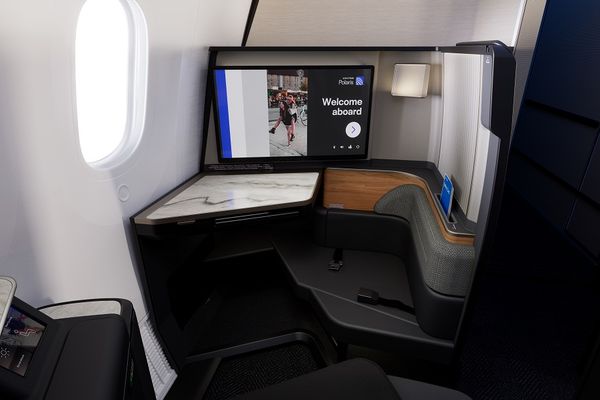Life has become easy nowadays; one hardly has to do anything to succeed or accomplish tasks. The advent of social media gets you fame, artificial intelligence does your work so you can just lay back and have fancy drinks with umbrellas popping out of the glass, and almost everything is automated so you can sleep more than the ideal eight hours. These are some of the common notions spreading around the world too rapidly.
One such idea is that the autopilot feature controls everything in an aircraft, and there is no need for a pilot to be present. It is common in conversations that almost anyone can fly a plane.
This article will talk about the alignment between a human and autopilot.
History
It has been 112 years since autopilot began, and the credit goes to Lawrence Sperry, who later formed the Sperry Corporation – which has played an incredible role in the Aerospace, Defense, Electronics, and Information Technology industries over the years. When it started in 1912, the autopilot system connected a gyroscopic heading indicator with an altitude indicator to hydraulically operate the elevator and rudder. In that period, flying demanded the utmost attention of a pilot, with the range of aircraft increasing and the pilots exhausted from flying long hours. Autopilot became essential so that the pilots could take their hands off the controls for short periods and focus on other tasks such as navigation and communication.

Current Era Usage and Function
The autopilot system does not only remain in the cockpit. It extends and relies on a series of sensors all around the aircraft collecting data–GPS, information, data on airspeed and altitude are fed back to the computers on board, which use the information to determine if a plane is taking a detour from its pre-set route. The computers are constantly running at a fast speed. So, in case of any inconsistency–it adjusts to keep the aircraft on that specific flight profile.
The autopilot adjusts and maintains level flight toward the assigned path without the input. The gyroscope and altitude indicator are still the fundamental way to operate the autopilot mode in an airplane, but with more accuracy and advanced additional controls such as: an actuator control unit (ACU) converting power into motion, a drive unit integrating compressed air technology with conventional motor systems improving the efficiency, airspeed indicators (ASI) measuring the forward speed of the aircraft.
There are four elements of an autopilot in the current era:
- Steering commands (a radio receiver or a computerized system)
- Motion and positioning sensors (gyroscopes, accelerometers, altimeters, and airspeed indicators)
- A computer to check the comparison of parameters mentioned of the actual position and motion
- Servomotor–to actuate the engine and control surface by rotating a shaft connected to the engine throttle

Conclusion
Think about your phone. It has made life easy, and you can convey your thoughts in split seconds, make calls, use applications to order food, date, shop for clothes, and look for homes–all the basics one needs. But what if one day your battery conks out? It would need your supervision to look for a new one for a much better usage. In the same way, autopilot can never replace a human touch.
The alignment between artificial intelligence and pilots is imperative because they undergo extensive training to discern flight controls and spend considerable time and money to become certified.
The real question is- “Would you fly knowing that just an autopilot is operating the plane?”
It would be incongruous.
Final Delivery Tally and OEM Tracker » Alaska Airlines and LATAM Formally Dissolve Codeshare Partnership » “I’m Not Okay”: Chilling Audio Captures Near-Disaster as Pilot Tries to Kill Engines »
Comments (0)
Add Your Comment
SHARE
TAGS
INFORMATIONAL AviationAutopilotInformationHistoryRECENTLY PUBLISHED
 This Week in Aviation: The 10 Stories That Mattered Most
From major airline developments to aircraft updates and industry shifts, this weekly recap highlights the ten most-read aviation stories from the week of December 28.
INFORMATIONAL
READ MORE »
This Week in Aviation: The 10 Stories That Mattered Most
From major airline developments to aircraft updates and industry shifts, this weekly recap highlights the ten most-read aviation stories from the week of December 28.
INFORMATIONAL
READ MORE »
 Nearly 500 Flights Cancelled Following Venezuela Attack, Caribbean Airspace Closure
Hundreds of flights have been cancelled this morning after an overnight U.S. military attack in Venezuela left airspace in much of the Caribbean closed.
NEWS
READ MORE »
Nearly 500 Flights Cancelled Following Venezuela Attack, Caribbean Airspace Closure
Hundreds of flights have been cancelled this morning after an overnight U.S. military attack in Venezuela left airspace in much of the Caribbean closed.
NEWS
READ MORE »
 Why Airline Class Wars Will Intensify in 2026
The "Class War" of 2026 is no longer just about legroom; it is a calculated, multi-billion-dollar strategic pivot by Original Equipment Manufacturers (OEMs) and carriers to capture a "splurge-ready" traveller base that is increasingly opting for "one big trip" over frequent, low-cost hops.
INFORMATIONAL
READ MORE »
Why Airline Class Wars Will Intensify in 2026
The "Class War" of 2026 is no longer just about legroom; it is a calculated, multi-billion-dollar strategic pivot by Original Equipment Manufacturers (OEMs) and carriers to capture a "splurge-ready" traveller base that is increasingly opting for "one big trip" over frequent, low-cost hops.
INFORMATIONAL
READ MORE »



